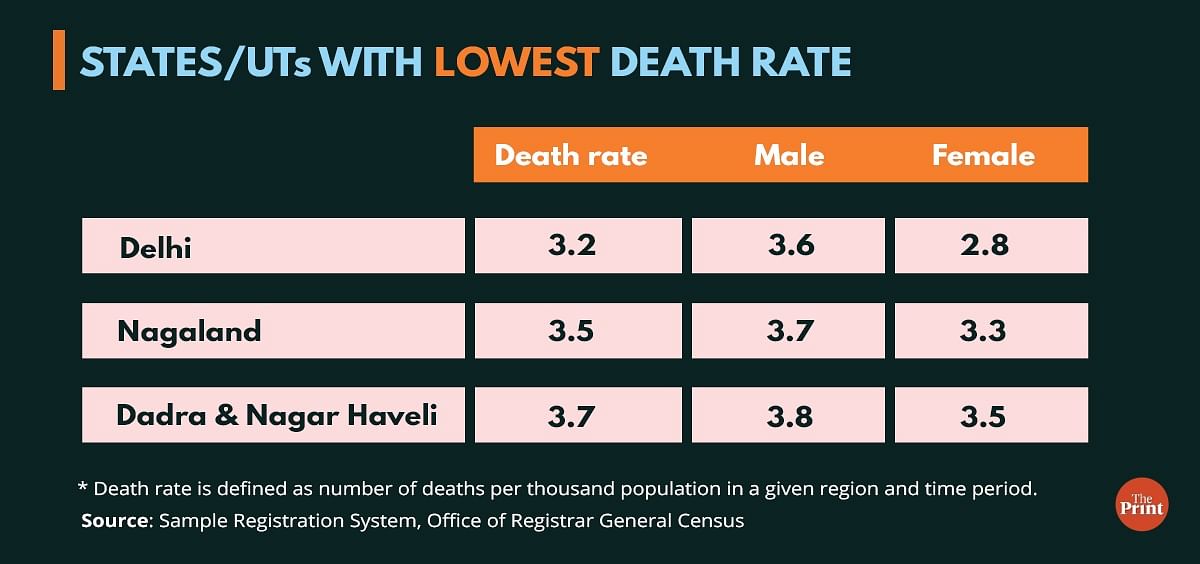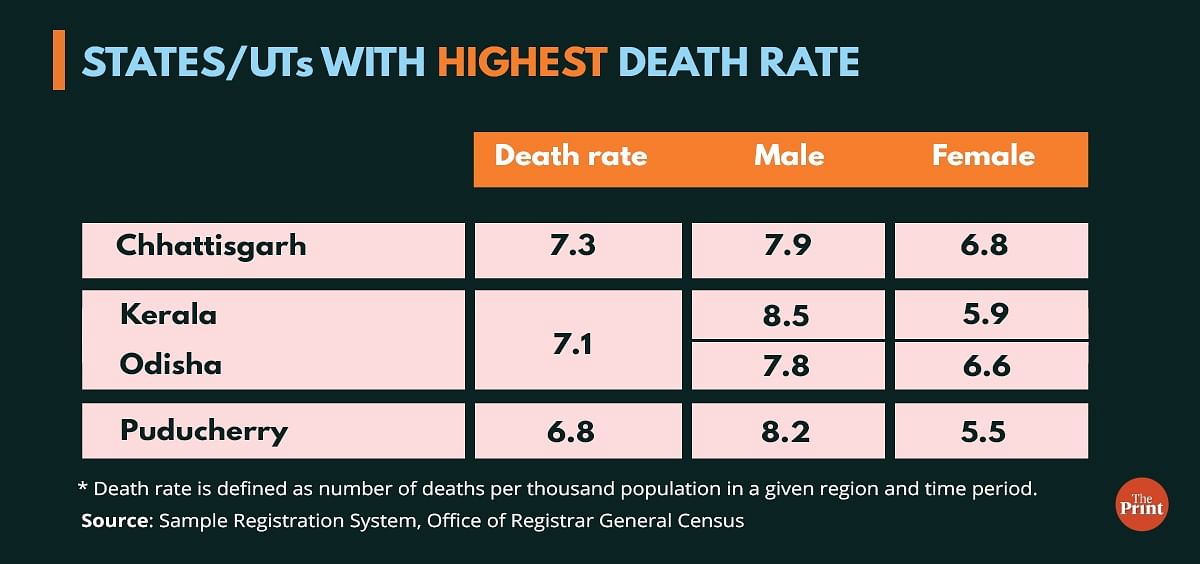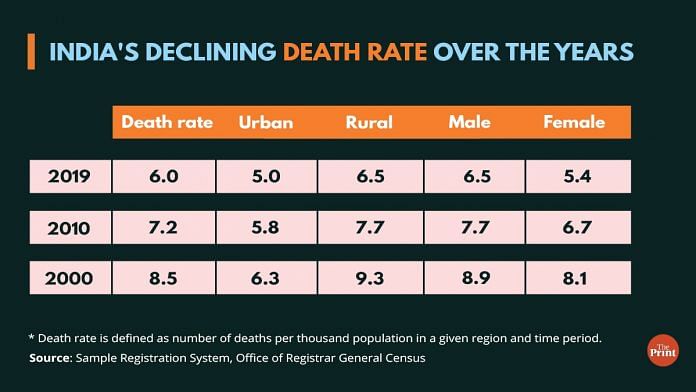New Delhi: Delhi has the lowest death rate in the country, with 3.2 deaths per thousand population recorded in 2019, while Chhattisgarh has the highest at 7.3, followed by Kerala and Odisha at 7.1, according to the latest Sample Registration System (SRS) data released earlier this week.
Death rate is defined as the number of deaths per thousand population in a given region and time period.
Overall, the country’s death rate continues to show a steady decline — from 8.5 deaths per thousand population in 2000 to 6 in 2019, an indication of improved and better access to health infrastructure and awareness.
Noted demography and population expert and retired Jawaharlal Nehru University (JNU) professor P.M. Kulkarni told ThePrint that India’s death rate is lower than that of European countries, such as the United Kingdom, Sweden, and Denmark, where it ranges between 9 and 10.
“But that is because these countries have a large number of elderly people. The crude death rate (which indicates the number of deaths per 1,000 midyear population) is not a good measure for comparing mortality as it is strongly influenced by age distribution in addition to mortality,” Kulkarni said.
While the death rate in India has witnessed a significant decline over the last four decades — in 1971 there were 14.9 deaths per thousand population — the data has thrown up another significant trend: Earlier the death rate in rural areas was more compared to urban, now the gap is shrinking.
The latest SRS data shows the death rate in urban areas in 2019 to be 5, while in rural areas it was 6.5. As against this, in 2010 the death rate in urban areas was 5.8, while it was 7.7 in rural areas. In 2000, the gap was more. There were 9.3 deaths per 1,000 population in rural areas, compared to 6.3 in urban areas.

“Decline in the overall death rate in the country during 2010-2019 indicates progress in the socio-economic condition of the people. A sharper decline in death rate in rural India reflects an improvement in access to health care services in our villages. Also, a higher death rate in the southern states calls for more policy attention,” National Institute of Urban Affairs professor Debolina Kundu told ThePrint.
Kundu added that the difference in the death rates between the rural and urban areas of the states of Kerala and West Bengal is reported to be very low. However, West Bengal reports a much lower death rate as compared to Kerala.
“Research is needed by disaggregated age groups to understand the mortality differentials in these states,” she said.
Besides Delhi, among the smaller states the death rate is low in Nagaland, 3.5 deaths per thousand population, and Dadra and Nagar Haveli, where the figure is 3.7.

Among the bigger states, in addition to Chhattisgarh, Punjab and Madhya Pradesh have also recorded a high death rate of 6.6 in 2019, while Uttar Pradesh’s death rate was recorded at 6.5, Andhra Pradesh’s at 6.4, Assam’s at 6.3, Karnataka’s at 6.2 and Telangana’s and Tamil Nadu’s at 6.1 in the same year.
Among the union territories, Puducherry has the highest death rate at 6.8.
Also read: India’s elderly population to rise 41% over next decade to touch 194 mn in 2031: Govt report
Death rate higher in men as compared to women
This is another trend that has continued over a period of time. The number of deaths per thousand among men is more as compared to women. In 2019, 6.5 deaths per thousand males were recorded, as compared to 5.4 among females.
In 2010, deaths per thousand recorded among males was 7.7, as compared to 6.7 among females. In 2000, the figure stood at 8.9 for males and 8.1 for females.
In 2019, according to the SRS data, in a majority of bigger states and union territories, the number of deaths per thousand males has been more than that of females.
(Edited by Poulomi Banerjee)
Also read: Women in India live longer than men but don’t have healthier lives, finds new report






